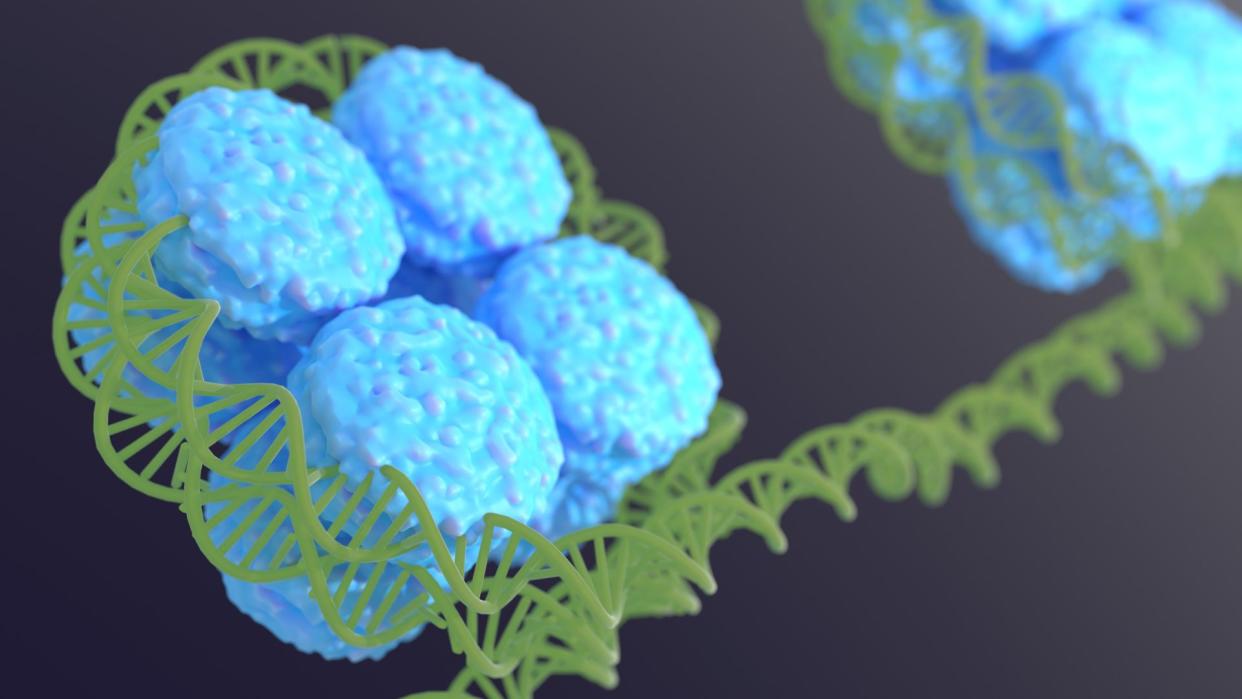Mysterious 'cryptic' molecules made by zombie cells may drive aging, scientists say

"Zombie cells" that lurk in the body and contribute to age-related diseases make small, strange molecules not seen in normal cells. The exact function of these "cryptic" molecules remains a mystery, but now, scientists think they may know why zombies build them in the first place, The Scientist reported.
Scientifically known as "senescent" cells, zombie cells don't die but stop dividing due to damage or stress. These undead cells secrete molecules that rally the immune system and spark inflammation. Senescent cells aren't all bad — some studies suggest that they help repair damaged tissues — but as the body ages, these zombies start to accumulate and drive inflammation that contributes to age-related diseases like cancer, Alzheimer's and osteoarthritis.
In addition to spewing inflammatory molecules, senescent cells undergo a process called "cryptic transcription," according to The Scientist. This process describes when cells erroneously use supershort snippets of DNA — mere fragments of genes — to build tiny molecules of RNA, DNA's molecular cousin. Normally, cells use RNA as blueprints to build proteins, among other things.
And usually, cells read genes starting at specific locations on the DNA molecule. Think of how a capital letter marks the start of a sentence and a period marks the end — genes have similar start and end points. However, in cryptic transcription, cells may start reading in the middle of a DNA "sentence," and this results in the cell making an unusually short RNA molecule.
Related: The secrets to extreme longevity may be hiding with nuns... and jellyfish
The exact function of these cryptic RNAs remains unknown. However, Payel Sen, a molecular biologist at the National Institute on Aging within the National Institutes of Health (NIH), told The Scientist that she suspects that the production of these small molecules may sap the cell's resources, causing it to grow less and less efficient with age. Furthermore, the cell may use the instructions within the RNA to build tiny proteins that somehow interfere with the cell's normal functions.
Learning why zombie cells undergo cryptic transcription and how this impacts aging could be key to scientists' overall understanding of the aging process, as well as their attempts to prolong life span and prevent age-related disease. In a new study, published March 31 in the journal Nature Aging, Sen and her colleagues started to unravel the "why" behind this phenomenon.
RELATED STORIES
—Skin cells made 30 years younger with new 'rejuvenation' technique
—Anti-aging vaccine shows promise in mice — will it work in humans?
—Scientists find species that don’t seem to age. What does it mean for humans?
The team identified more than 350 "cryptic sites" in human senescent cells, meaning they identified gene fragments from which the weird RNAs are made. They also identified "epigenetic" changes at these sites that weren't present in young, healthy cells and may explain why cryptic transcription happens.
Epigenetics literally means "on top of genetics" and refers to molecules that latch onto DNA and affect which genes can be used to make proteins. The epigenetic changes observed in the zombie cells were specifically seen in histones — spool-like proteins in chromosomes that DNA is wound around — and the changes seemed tied to the cells' ages. In the zombie cells, these epigenetic changes exposed parts of the genome to cells' RNA-making machinery, whereas in young cells, the same gene fragments were "hidden" and therefore unexpressed.
This finding supports the idea that zombie cells undergo cryptic transcription because their ability to control gene expression withers over time, as such epigenetic changes accumulate atop their DNA. Read more in The Scientist.

